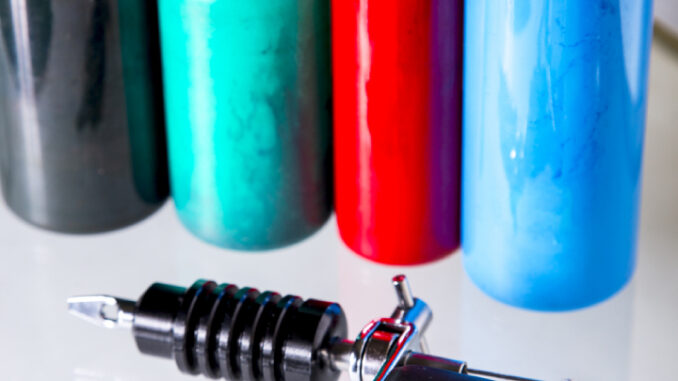
Tattoos are lasting expressions of personal stories and artistic flair. However, the question that often lingers in the minds of tattoo enthusiasts and beginners alike is, “Does tattoo ink expire?” Ink plays a crucial role in the longevity and vibrancy of a tattoo. In this article, we’ll discuss the factors that affect tattoo ink expiration, from the chemistry of pigments to the role of expiration dates, giving you the knowledge you need to make informed decisions about your body art choices. Buckle up and join us on this journey where science meets art as we reveal everything you need to know about tattoo ink expiration dates.
How long does tattoo ink last?
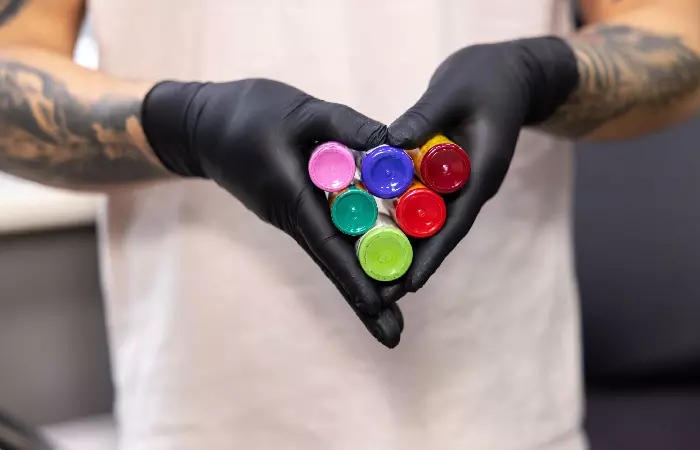 Image: Shutterstock
Image: Shutterstock
Tattoo ink typically lasts about two years. This gives professional tattoo artists plenty of time to use it before it expires. Many artists run out of ink before the expiration date, especially if they primarily use black and gray ink. If you’re not a frequent artist or don’t use a lot of colored ink, keep the two-year limit in mind. Reputable tattoo ink brands provide labels with expiration dates and lot numbers, which makes for easy tracking and ensures safety standards. The same goes for UV tattoo ink. However, explore the unique considerations in the next section.
How long does UV tattoo ink last?
UV tattoo ink generally lasts about as long as traditional tattoo ink, which is about two years. As with regular ink, the quality of UV ink can be affected by factors such as sunlight exposure and skin type. It is important to follow proper aftercare and protect your UV tattoo from excessive sun exposure to maintain its vibrancy for as long as possible.

Ever wondered why UV tattoo ink can glow? It contains phosphors that react to ultraviolet light, giving your body art a luminous touch under blacklight.
In the following section, we addressed one of the most frequently asked questions: Do tattoo inks go bad? Scroll down to find out more.
Can tattoo ink go bad?
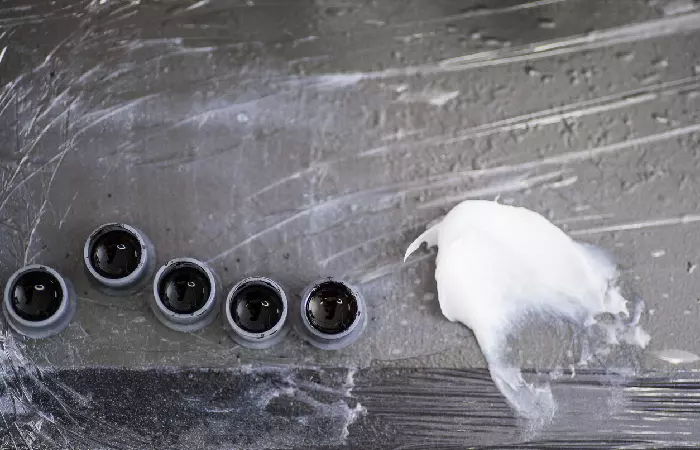 Image: IStock
Image: IStock
Yes, tattoo ink can go bad. While the ink itself does not have a specific expiration date, it becomes susceptible to contamination once it is opened. Tattoo artists should avoid using ink after the recommended time period. To properly store ink, it should be stored in a sterile, cool, dark place with a sealed lid. Opening the ink exposes it to air, which increases the risk of contamination. So, it is best to only open it when necessary. It is also advisable to research the manufacturer’s hygiene standards before purchasing the ink to ensure its quality.
Now that we’ve established that tattoo ink can indeed go bad, let’s dive deeper into the consequences of using ink that has gone bad.
What happens if you use expired tattoo ink?
Expired tattoo ink is susceptible to contamination, which promotes the growth of harmful bacteria and skin infections. Bacterial infections can cause serious skin damage, including irritation, rash, sepsis, swelling, pus formation and crusting.
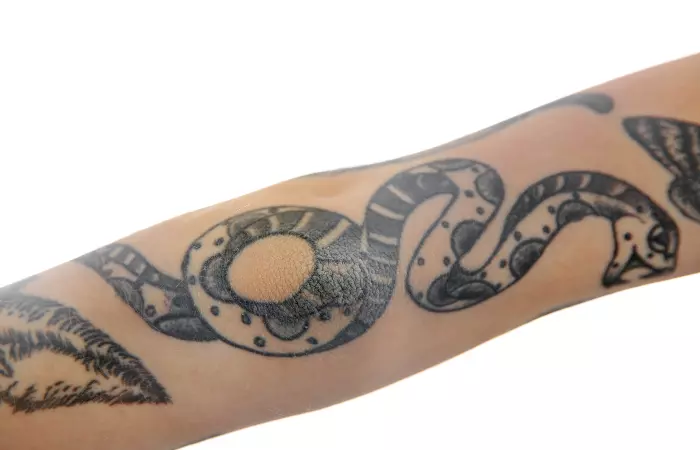 Image: Shutterstock
Image: Shutterstock
Expired ink can result in faded, dull tattoo colors and poorly executed designs. While disappointing, this effect is not inherently dangerous.
Long-term health complications
Using expired ink can even lead to long-term health problems, such as lung disease, hepatitis and tetanus.
We can prevent these potential consequences of using expired tattoo ink and ensure a safe and vibrant tattoo experience by identifying the signs of compromised ink. Read on to learn more about this.
How do you know if tattoo ink is bad?
Always check tattoo ink for any changes in appearance, consistency, or separation of elements in the bottle before using the ink for tattooing.
Check the expiration date on the ink bottle. If the ink has passed its expiration date, it should be thrown away, regardless of its apparent condition.
If the ink has not been stored properly, discard it. Good storage conditions are crucial to maintain ink quality and prevent contamination.
Expired tattoo ink may have a sour, rancid odor, similar to a strong chemical smell. This unusual odor may be immediately noticeable upon opening the bottle.
Examine the texture of the ink; expired ink may appear thin or have a semi-liquid consistency with visible lumps. Oils and pigments that separate, even after shaking, indicate a possible expired ink.
Color and opacity changes
Expired ink may show changes in color or opacity, resulting in less vibrancy. When applied to skin, designs may appear dull and lack the desired intensity.
Check for signs of evaporation, as broken seals can cause the ink to dry out over time. Dried or inconsistent consistency can make the ink unsuitable for tattooing.

When ink bottles are opened, use a screw cap to prevent unnecessary exposure to air.
Knowing what causes tattoo ink to expire quickly is essential to maintaining the integrity of your ink collection. Scroll down to explore these factors.
Why does tattoo ink expire so quickly?
To properly store your tattoo ink throughout its entire shelf life, pay attention to the factors below and avoid them.
Exposure to extreme temperatures can cause changes in the chemical composition of the ink, shortening its shelf life.
Once the ink bottle is opened, it is more susceptible to contamination, increasing the risk of infection during tattooing.
Cross-contamination, especially when using the same ink cap or tattoo needle, can affect the ink and shorten its shelf life.
Physical damage to the ink bottle can shorten its shelf life, affecting the quality of dynamic colors and frequently used colors in your designs.
Exposure to UV rays and radiation can contribute to the breakdown of tattoo ink, causing it to spoil faster.
Incorrect autoclaving procedures can affect the sterility of the ink, which can lead to a faster shelf life.
The absence of preservatives or microbial growth inhibitors can cause microbial contamination, further emphasizing the importance of a sterile environment.
Any change in the original composition of the tattoo ink may affect its stability and contribute to a faster shelf life.
Scroll down to the next section for the best methods for storing tattoo ink, ensuring its longevity and maintaining the quality necessary for artistic endeavors.
How do you store tattoo ink?
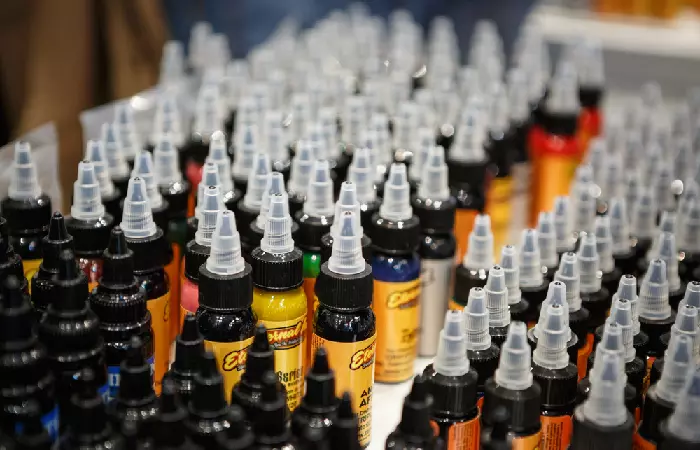 Image: Shutterstock Store ink bottles in an airtight container in a dark, cool place. Properly label ink bottles with the date of purchase to track their age and identify any expired products. Store tattoo ink at room temperature to prevent freezing or separation, avoiding extreme conditions. Store ink in a shaded area to avoid prolonged exposure to sunlight, which can cause evaporation and drying. Use plastic caps with tight bottoms to prevent spills and stains during storage. To maintain the quality of the ink, do not pump air into the bottle. Do not add anything else to the ink to maintain its integrity. To avoid contamination, do not dip needles directly into the plastic bottle.
Image: Shutterstock Store ink bottles in an airtight container in a dark, cool place. Properly label ink bottles with the date of purchase to track their age and identify any expired products. Store tattoo ink at room temperature to prevent freezing or separation, avoiding extreme conditions. Store ink in a shaded area to avoid prolonged exposure to sunlight, which can cause evaporation and drying. Use plastic caps with tight bottoms to prevent spills and stains during storage. To maintain the quality of the ink, do not pump air into the bottle. Do not add anything else to the ink to maintain its integrity. To avoid contamination, do not dip needles directly into the plastic bottle.
In the world of tattoos, the longevity of ink is a crucial consideration. With a standard shelf life of two years, proper storage, reliable sources, and adherence to expiration dates play a major role in preserving these inks. Whether it’s traditional or UV tattoo ink, the principles remain the same: preserve, protect, and discard when necessary. Using expired ink comes with risks, from faded colors to health concerns. Visual inspections, date tracking, and optimal storage are crucial to staying safe. Remember, every drop of ink carries the weight of a story, and understanding ink shelf life and storage is essential to a confident and safe tattooing experience.
Frequently Asked Questions
How long does tattoo ink last after opening the package?
Once opened, tattoo ink typically has a shelf life of about 12-18 months. However, this can vary based on factors such as storage conditions and ink quality.
Does tattoo ink have a shelf life if unopened?
Yes, tattoo ink can expire even if it is unopened. Expiration dates are determined by the manufacturer and are affected by factors such as preservatives, storage conditions, and ink composition.
How long does tattoo ink last after the expiration date?
The effectiveness of tattoo ink after its expiration date can vary. It is generally advisable not to use ink that is past its expiration date, as it may lead to discoloration, contamination, or potential health risks.
Where is the expiration date on tattoo ink?
The expiration date is usually printed on the label of the tattoo ink bottle. Reputable manufacturers will provide clear labeling, including the expiration date and lot number for tracking purposes.
Key Points
Standard tattoo ink typically lasts about two years, which gives you plenty of time to use it. Using expired tattoo ink carries the risk of contamination, faded colors, and potential health issues such as infections. Properly storing tattoo ink can help maximize its shelf life.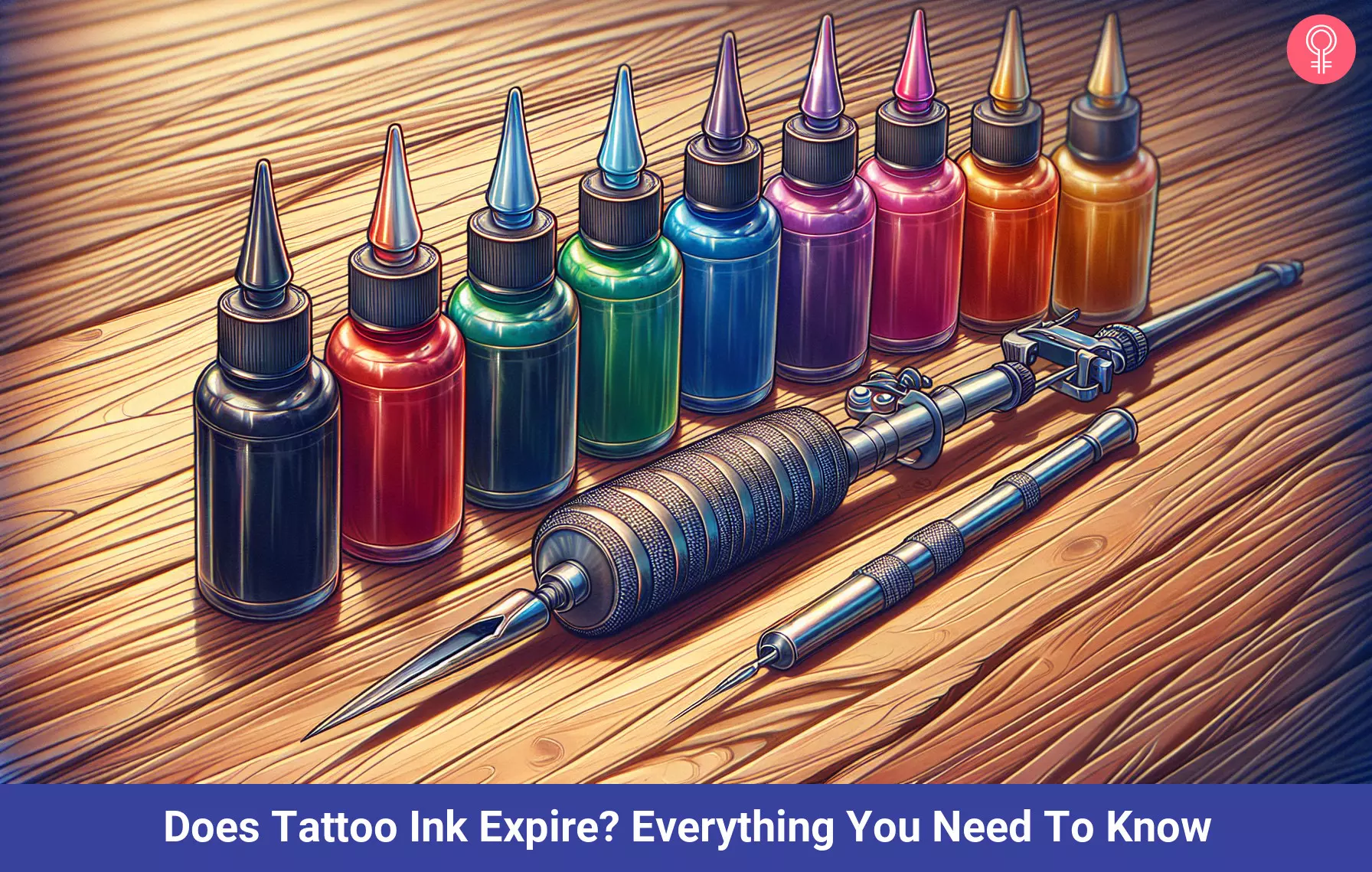
Image: Stable Diffusion/StyleCraze Design Team
Discover the truth about the shelf life of tattoo pigments from an expert tattoo artist who advises on how and where to buy ink. Watch this enlightening video and make informed choices for a safe and long-lasting tattoo experience.
Was this article helpful? ReviewerAuthorEditorFact Check
![]() Anastasiia Gatsko is a professional tattoo artist and piercer with over five years of hands-on experience. She began her journey in tattooing with permanent makeup, which shaped her skills and perspective. Combining her passion for art with formal business education, Anastasiia started G Tattoo & Piercing in Toronto, Ontario.
Anastasiia Gatsko is a professional tattoo artist and piercer with over five years of hands-on experience. She began her journey in tattooing with permanent makeup, which shaped her skills and perspective. Combining her passion for art with formal business education, Anastasiia started G Tattoo & Piercing in Toronto, Ontario.
Read the full biography of Anastasiia Gatsko
![]() Manjari is a beauty and lifestyle writer with over three years of experience writing across various niches including beauty, health, wellness, and technology. She first discovered her passion for writing in school and has been honing her craft ever since.
Manjari is a beauty and lifestyle writer with over three years of experience writing across various niches including beauty, health, wellness, and technology. She first discovered her passion for writing in school and has been honing her craft ever since.
Read the full biography of Manjari Uppal
![]() Shatabdi is an associate editor and an alumnus of Lady Brabourne College, Kolkata, where she honed her skills and developed a deep understanding of the world of literature and expression. She has worked with various organizations and websites operating in different sectors ranging from education to lifestyle, which speaks to her adaptability and her urge to learn.
Shatabdi is an associate editor and an alumnus of Lady Brabourne College, Kolkata, where she honed her skills and developed a deep understanding of the world of literature and expression. She has worked with various organizations and websites operating in different sectors ranging from education to lifestyle, which speaks to her adaptability and her urge to learn.
Read the full biography of Shatabdi Bhattacharya
![]() Joyce Joyson is a beauty and lifestyle writer with over a year of experience in creating short-form content for the beauty, fashion and lifestyle niches. She holds a Bachelor’s degree in History, Political Science and Geography from IIS University and a Master’s degree in Mass Communication and Journalism from Kristu Jayanti College.
Joyce Joyson is a beauty and lifestyle writer with over a year of experience in creating short-form content for the beauty, fashion and lifestyle niches. She holds a Bachelor’s degree in History, Political Science and Geography from IIS University and a Master’s degree in Mass Communication and Journalism from Kristu Jayanti College.
Read Joyce Joyson’s full biography
Leave a Reply